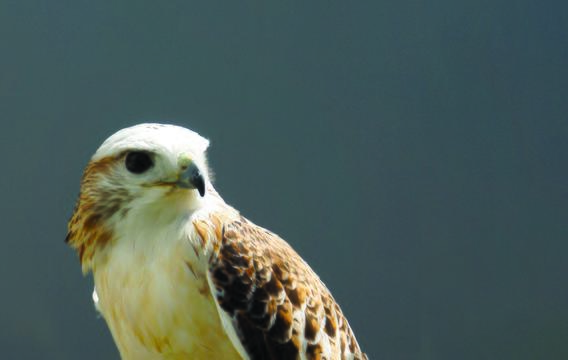Raptors that are permanently under human care, such as education ambassadors, frequently outlive their wild counterparts.

| Photo by The Raptor Center
Bald eagles, which sometimes live 15 to 20 years in the wild, can make it to the ripe old age of 40 to 50 in captivity. Northern saw-whet owls, living an average of 7 years in the wild, can also live twice as long under human care. Reduced exposure to diseases, a stable and safe diet, and protection from common dangers encountered in the wild contribute to this increased longevity.
Over the years, The Raptor Center (TRC) has learned that, like people, raptors can develop age-related medical conditions, such as arthritis, heart disease, and vision loss— conditions that must be addressed to provide them with a high quality of life throughout their golden years. Geriatric raptor care is a relatively new field with little information available to help guide us. To meet this challenge, Dana Franzen-Klein, DVM, TRC’s medical director, has established annual wellness exams for TRC’s educational ambassadors and for other raptors maintained in captivity throughout Minnesota.
These exams involve various diagnostic tests tailored to the individual and complement routine behavioral assessments conducted by raptor caretakers. Together, this testing regimen monitors the physical and mental health of an ambassador throughout its lifetime.
As geriatric conditions develop, Franzen-Klein expertly prescribes medications for pain control and recommends diet and other husbandry changes to improve a raptor’s comfort. The information gained from this wellness program will contribute to the body of knowledge in a growing field and help others to provide higher quality care for their aging ambassadors.